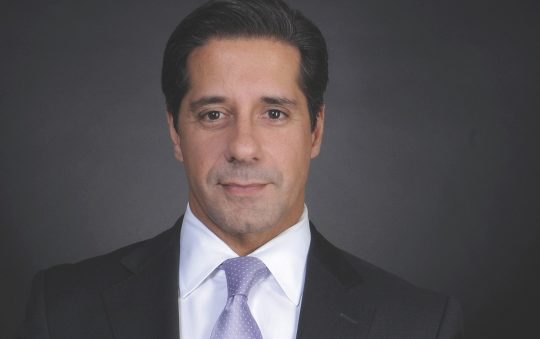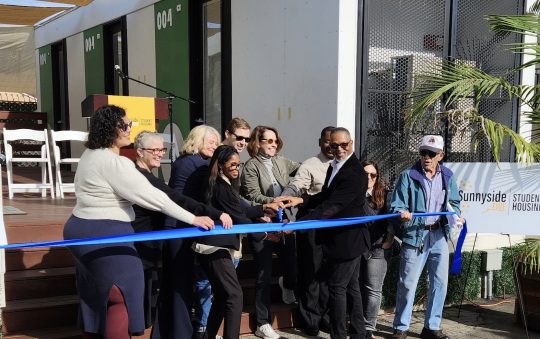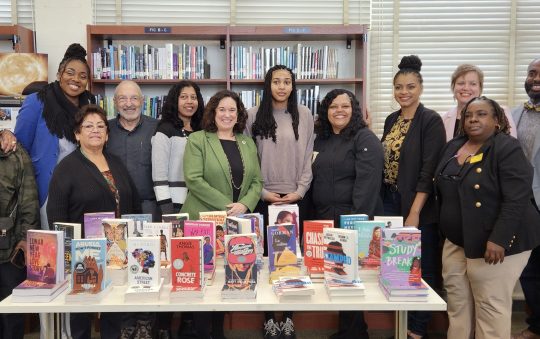
Black folks have always believed education is the key to success even though America has failed to provide a quality education for Black children for as long as most people can remember. And these days, under the Donald Trump’s administration, the prognosis for improving outcomes for African American students is arguably, bleaker than ever. For example, Trump’s Secretary of Education, Betsy DeVos, is the wrong person for the job. Among other disturbing indicators, she argues for the promotion of alternatives to traditional public schools, advocating for policies that would give parents an option that would divert funding from these schools that are attended by most Black students.
Former Secretary Arne Duncan denounced the inequities in America’s schools cited in a U.S. Department of Education’s survey, “Data Collection.” Duncan: “The inequities are socially divisive, educationally unsound, morally bankrupt and economically self-destructive, (adding), this must compel us to act.” This is an apt description of continuing race-based (racist) disparities in schools, but neither Duncan nor the report offered an explanation for the stark disparities between Black students and practically all other students. I suggest, the fundamental reason is racism.
One of the report’s findings surprised even hardened pundits: Most of the nation’s schools offer only part-time pre-school programs. And even though Black students account for less than a fifth of those in pre-school, they make up almost h almost half of the students suspended from pre-school multiple times!
Most Black people are aware of the race-based derivation of education disparities and are tired of endless research that confirms the obvious. But they must insist research takes into full account causal factors and that proposed solutions first identify the barriers to Black student’s receiving a proper education.
Here are some factors that contribute to race-based inequities in public education: Black students nationwide are expelled at triple the rate of their white peers. Five-percent of whites were suspended compared to 16% of Black students. Black girls are suspended at the rate of twelve-percent—far greater than girls of any other race or ethnicity. Students of color have less access to experienced teachers. Most of these students are stuck in schools with mostly new teachers and many Black students attend schools where as many as twenty-percent of teachers do not meet license or certification requirements. One in four school districts pay teachers in less-diverse high schools substantially more than teachers in schools with higher Black and Latino enrollment.
Such discrimination lowers academic performance for minority students, especially Blacks, putting them at greater risk of becoming drop outs. Research also shows the failure of decades of legal and political efforts to ensure equal rights in education. The Supreme Court’s landmark Brown v. Board of Education ruling banned school segregation and affirmed the right to quality education for all children. The 1964 Civil Rights Act guarantees equal access to education. Neither has lived up to its promise.
Daria Hall, former K-12 policy director at Education Trust said the Collection Data survey confirmed that students of color get less than their fair share of access to in-school factors that matter for achievement. She said also said, “Students of color get less access to high-level courses. Black students, in particular, get less instructional time because they are far more likely to receive suspensions or expulsions.” Although 16% of America’s public school students are Black, they represent 27% of students referred by schools to law enforcement and 31% of students arrested for an offense committed in school.
The following are three efforts to address a host of well-known race-based inequities: Common Core standards, the Local Control Funding Formula (LCFF) and My Brother’s Keeper.
Common Core is a nationwide initiative to standardize curriculum and instruction in mathematics and language arts in public schools. I described Common Core in a previous column as both a challenge and promise; unless Black students receive proper focus and equitable resources, Common Core could actually widen not eliminate or reduce the achievement gap.
My Brother’s Keeper was President Obama’s initiative that focuses on young Black men and boys, but also includes Latinos and Asians. —which means funding and other resources must be equitable, not equal, because equal means Black students receive the same amount of funding as all others. Since their needs are frequently substantially greater than other students, funding should be commensurate with those needs.
The Local Control Funding Formula is a California legislative initiative that enables school districts, rather than the state, to receive and allocate funds to those schools most in need. Again, the concern is equity, i.e., school boards must allocate funds so that schools most in need actually receive more funds than others in order to meet their needs. (Schools with substantially Black student population in the Los Angeles Unified School District are, without question, first among those most in need; Black parents and their local school communities must constantly demand equitable funding for their schools. A recent lawsuit won by the Community Coalition addresses this equity issue.)
Race-based (racist) inequities are clear and solutions must relate directly to the needs of Blacks especially, because they are the most victimized. Remember, public education was not designed to address their needs. Therefore, a major goal is for the Black community and its leaders to work with their allies to exert political pressure sufficient to change policies and practices that improve outcomes for Black students. This is a daunting but inescapable imperative.






